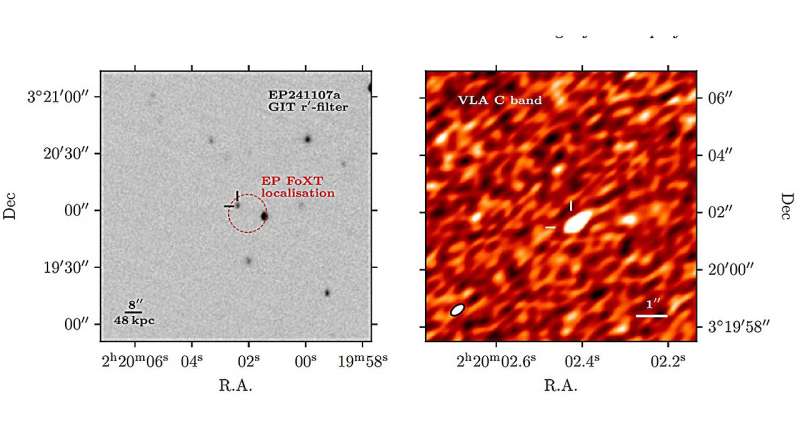
Recent observations have led astronomers to propose that the fast X-ray transient designated EP241107a has its origins in a gamma-ray burst (GRB). This conclusion is based on a series of multiwavelength observations conducted following the transient’s detection on November 7, 2024, by the Wide-field X-ray Telescope aboard the Chinese space observatory, the Einstein Probe.
Fast X-ray transients (FXTs) are brief bursts of soft X-rays, typically lasting from a few hundred seconds to several hours. Their unpredictable occurrences make them challenging to detect, and their underlying nature has long been a subject of scientific inquiry. Various hypotheses have been proposed regarding their origins, including stellar flares, supernova shock breakouts, and long gamma-ray bursts.
Detailed Observations and Findings
The observations of EP241107a were led by a team of astronomers, including Deepak Eappachen from the Indian Institute of Astrophysics in Bengaluru. Using ground-based telescopes such as the GROWTH-India Telescope and the Himalayan Chandra Telescope, the researchers aimed to clarify the characteristics of this mysterious transient. Their findings were published on November 4, 2025, in a study available on the arXiv preprint server.
The team discovered that EP241107a emitted a radio counterpart at frequencies of 10 GHz and 6 GHz, with flux densities of approximately 232 and 207 μJy, respectively. The spectroscopic redshift was determined to be 0.457, indicating the distance and expansion of the universe affecting the light from the source. Notably, when detected, EP241107a exhibited an X-ray luminosity of around 3.4 quindecillion erg/s in the 0.5-4 keV band, significantly exceeding the predicted luminosities for typical supernova shock breakouts.
About 60 minutes after the initial detection, an X-ray afterglow was observed, with a luminosity of 0.012 quindecillion erg/s in the 0.5–10 keV band. This afterglow diminished rapidly, which is a common characteristic of such transients.
Link to Gamma-Ray Bursts
Further analysis involved comparing the optical and radio data of EP241107a with other known extragalactic transients. The results suggested a strong correlation with the properties of gamma-ray bursts. The researchers noted, “We compared the radio and optical light curves of EP241107a with those of other transients and found that EP241107a is consistent with the parameter space occupied by GRB afterglows.”
Despite the findings supporting a gamma-ray burst origin, the authors emphasized certain anomalies. The absence of gamma-ray emission, along with the inferred on-axis viewing geometry and energetics derived from afterglow modeling, suggest that EP241107a may represent an intrinsically faint gamma-ray burst.
These observations not only enhance our understanding of fast X-ray transients but also provide a glimpse into the complex phenomena occurring in the universe. The research contributes to the ongoing efforts to decode the mysteries surrounding these fleeting cosmic events.
This study, led by Eappachen and his team, represents a significant step toward unraveling the nature of fast X-ray transients and their potential connections to more powerful cosmic events.







